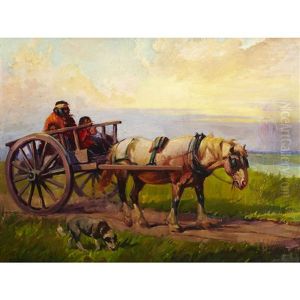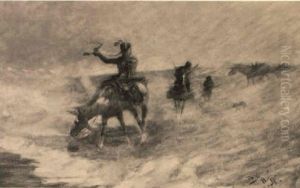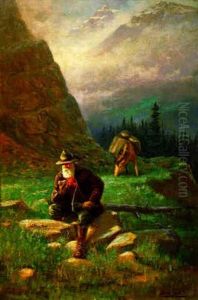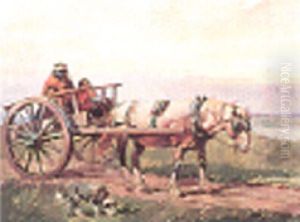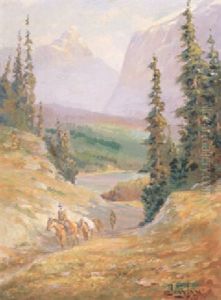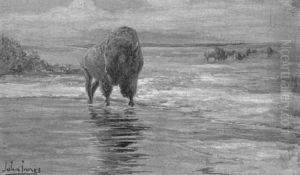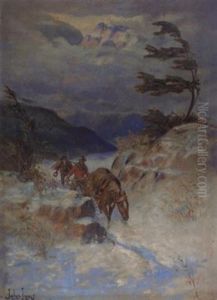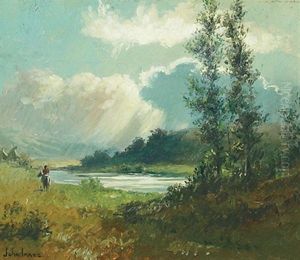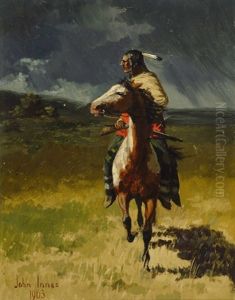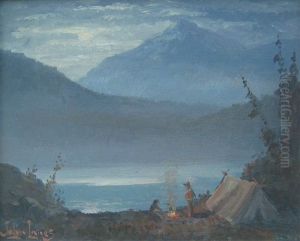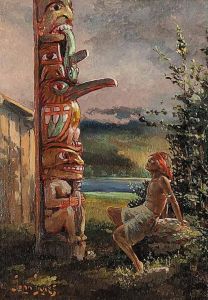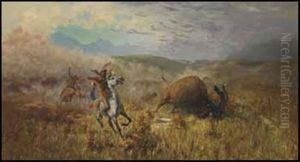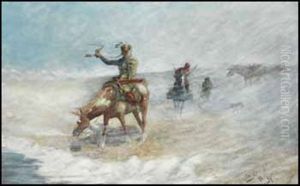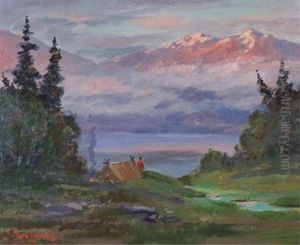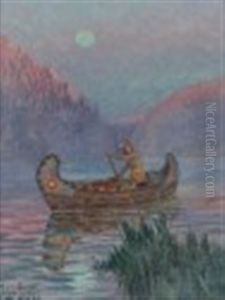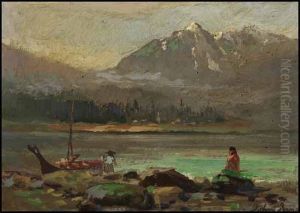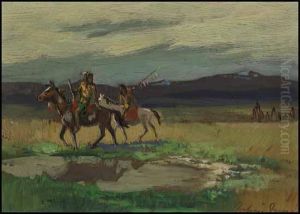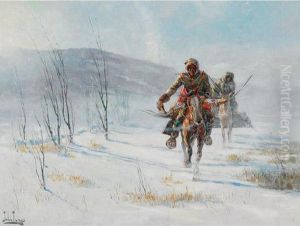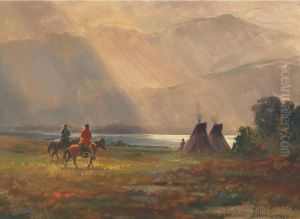John Innes Paintings
John Innes was a Canadian painter, illustrator, and sculptor known for his landscape paintings and depictions of Canadian life and wilderness. Born on May 5, 1863, in London, Ontario, Innes developed an early interest in art, which was nurtured through his education. He studied at the Art Students League in New York City and later in Europe, which broadened his artistic skills and perspective.
Innes's work was heavily influenced by the natural environment, and he often ventured into the Canadian Rockies and other remote regions to capture the beauty of the landscape. His paintings are characterized by a sense of realism and attention to detail, often focusing on the interplay of light and shadow. Innes was also interested in the lives of Indigenous peoples and included them in his narrative works, which depicted scenes of daily life, historical events, and the encroachment of Western civilization on traditional ways of life.
Beyond painting, John Innes was an accomplished illustrator, contributing to various publications. He also worked on large-scale murals and sculptural projects that showcased his versatility as an artist. Despite his contributions to Canadian art, Innes remains relatively lesser-known compared to his contemporaries. He spent the latter part of his life in British Columbia, where he continued to work and teach until his death in Vancouver on August 17, 1947.
Innes's legacy includes his role in the development of Canadian art during a time when the country was seeking to define its cultural identity. His artworks are part of several collections and continue to be studied and appreciated for their historical significance and artistic merit. Innes was not only a chronicler of the Canadian landscape and its peoples but also an active participant in the cultural life of his country, contributing to the arts community through both his creations and his teaching.
